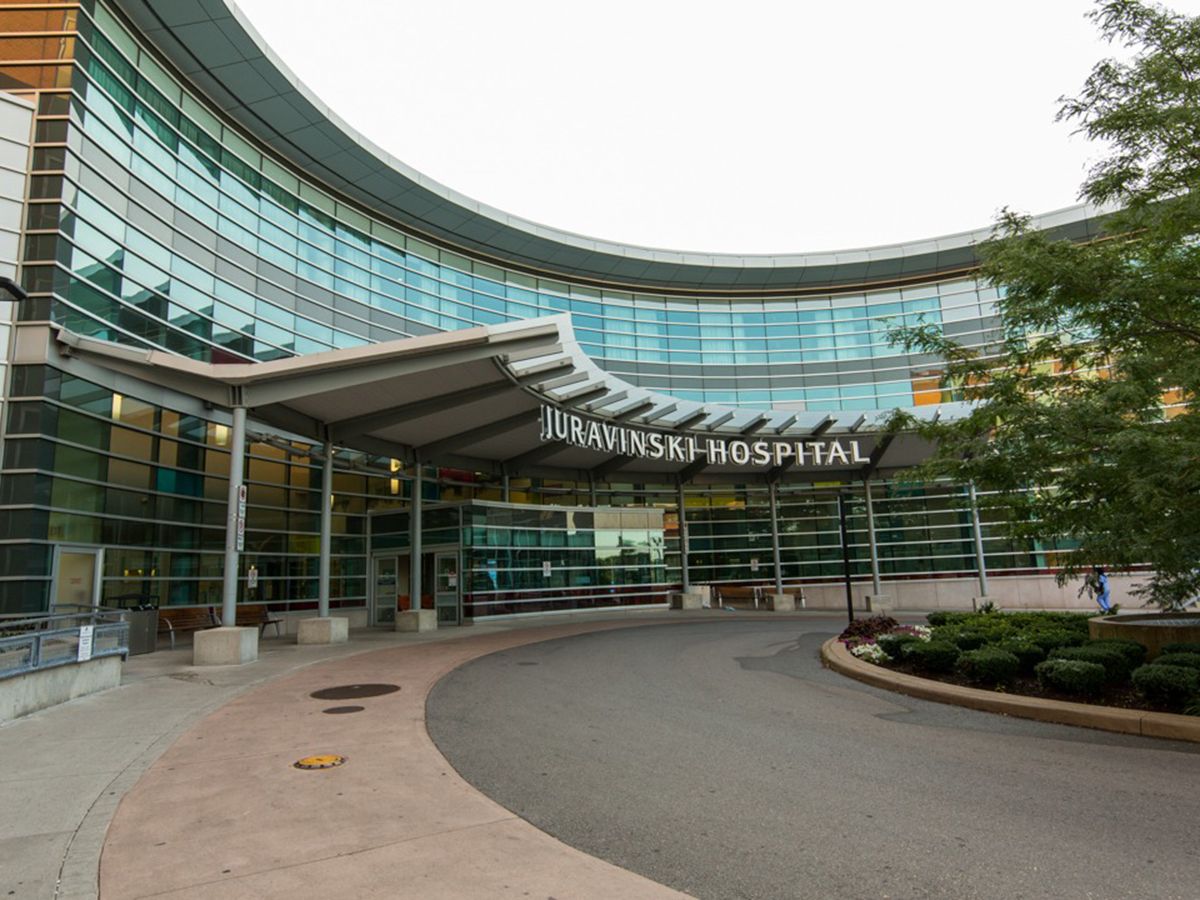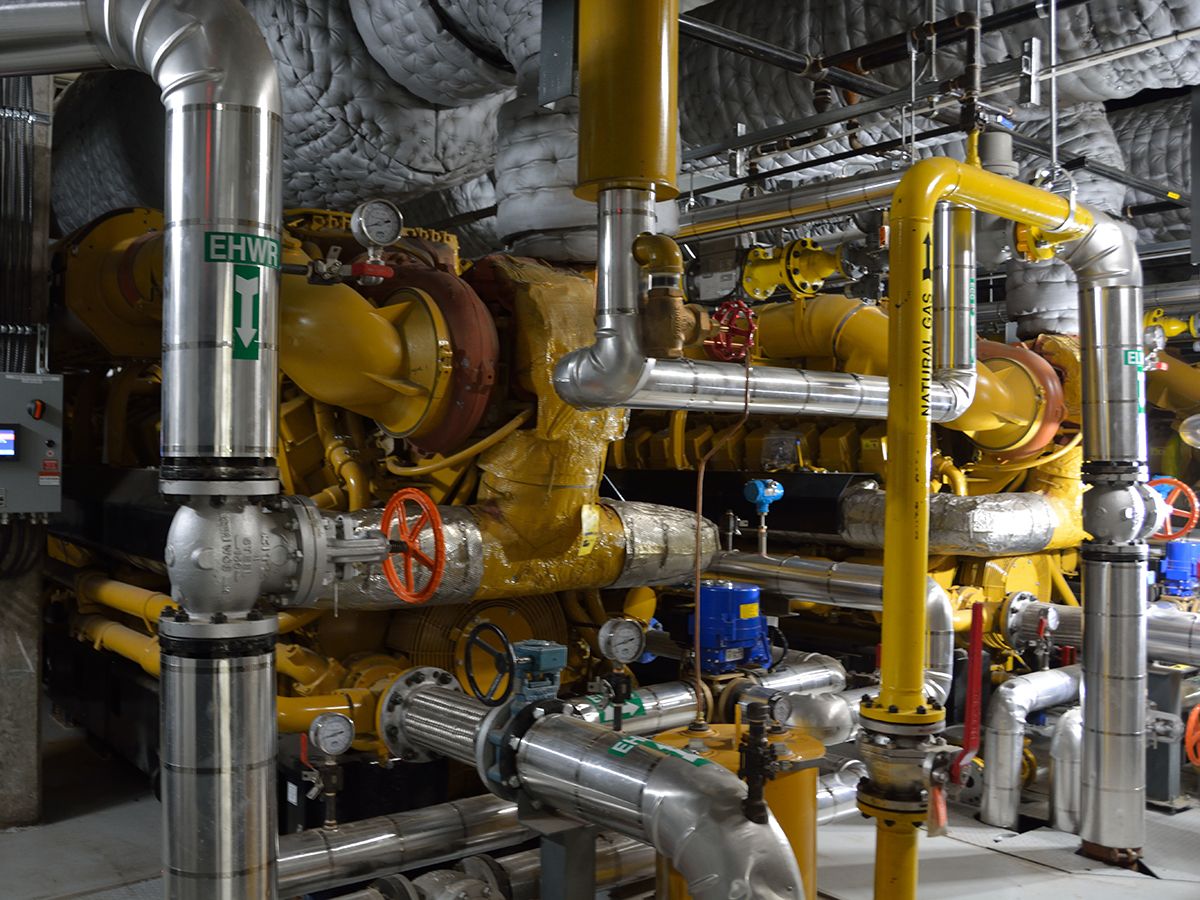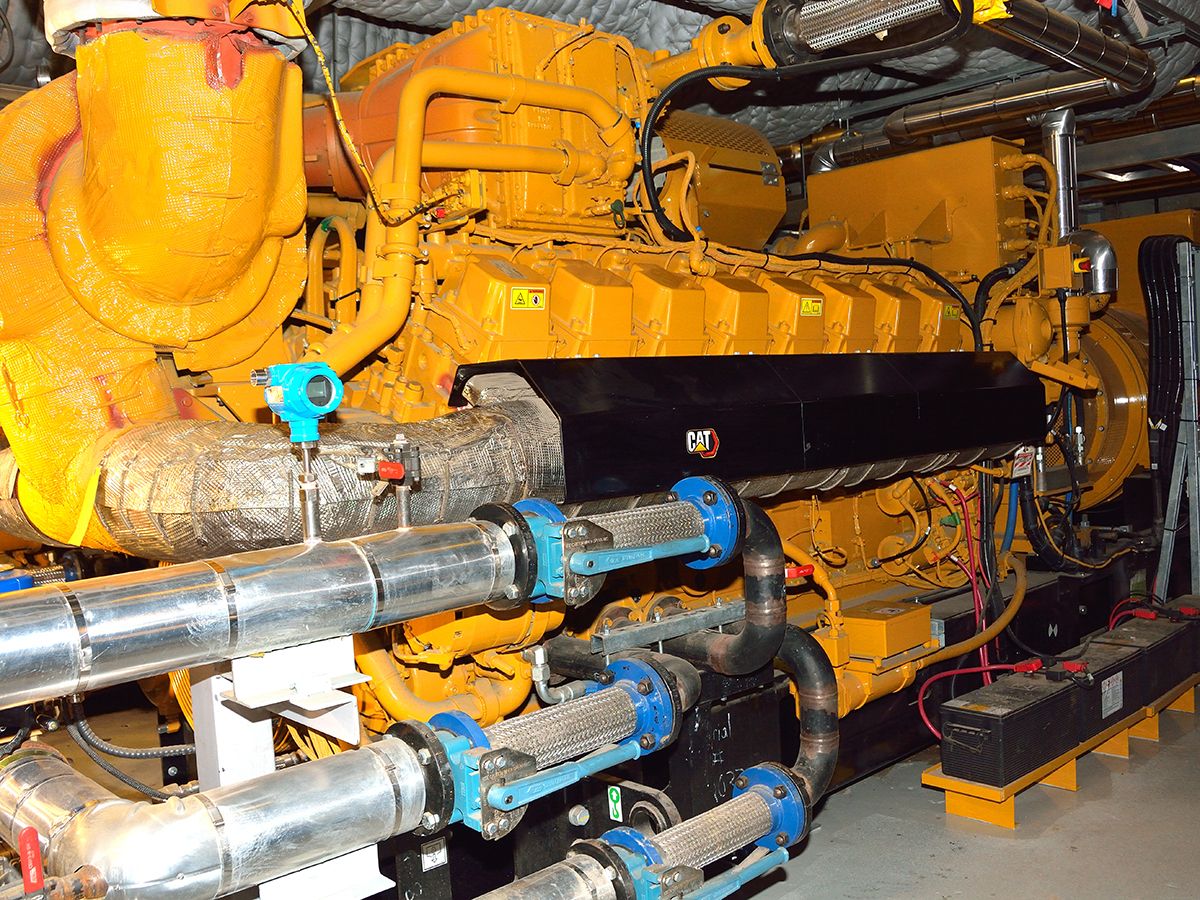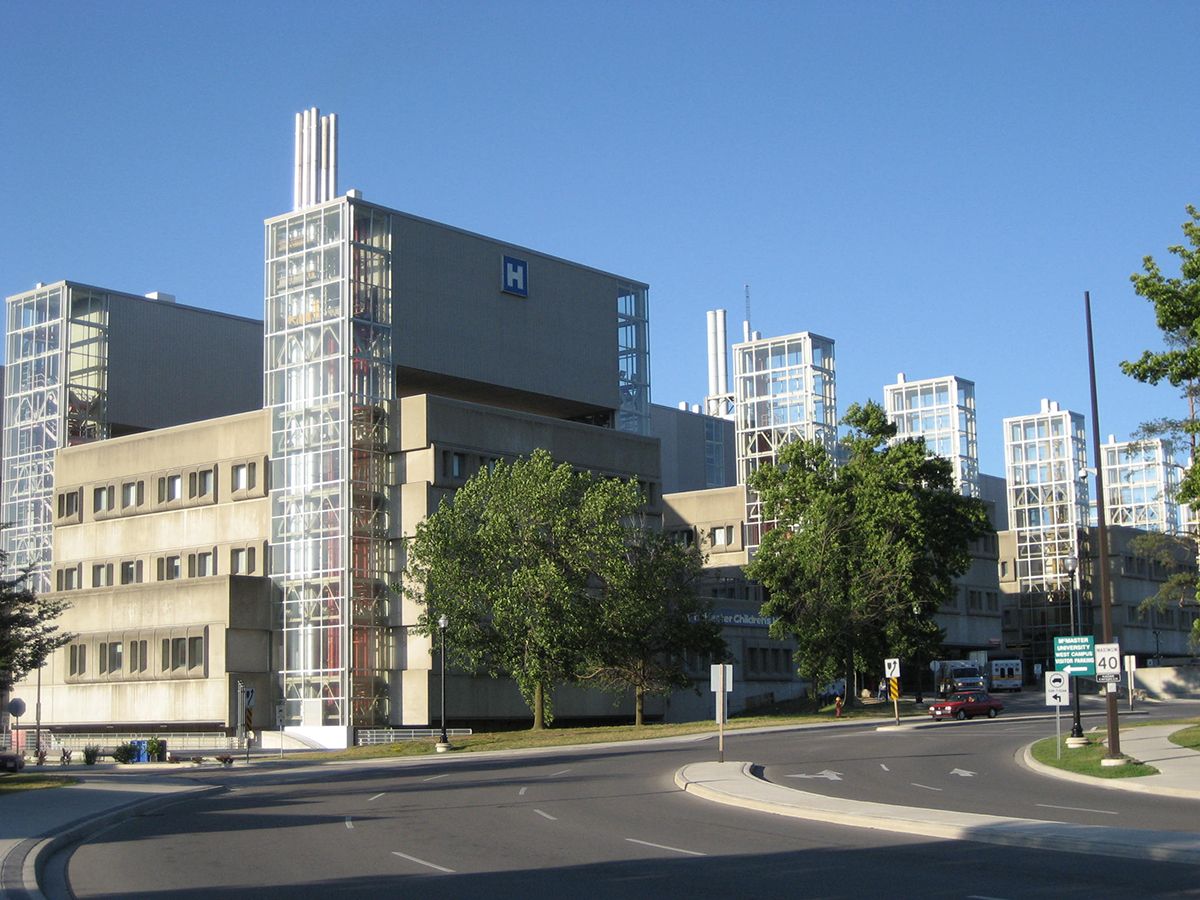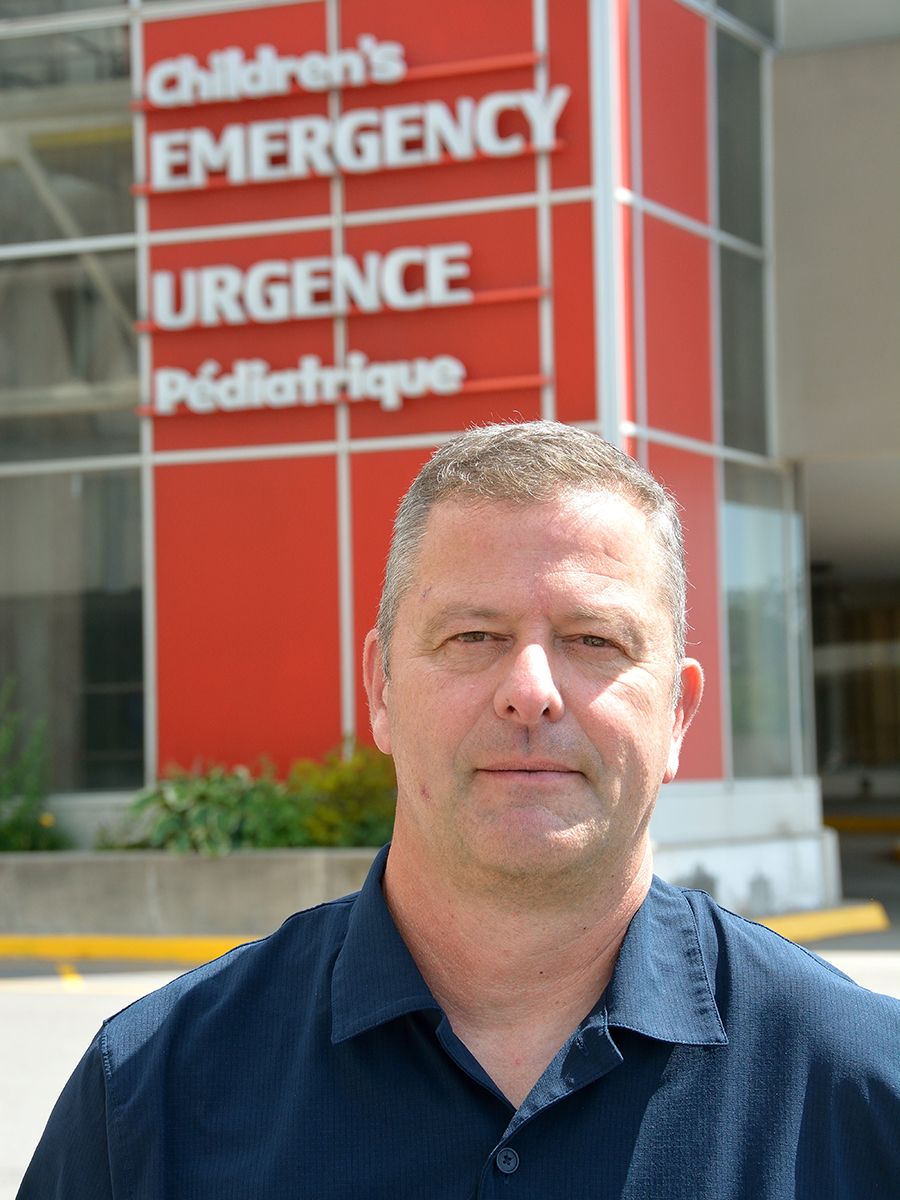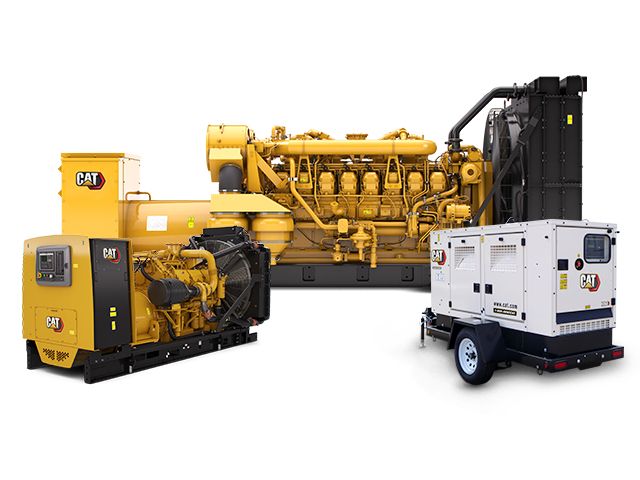POWER NEED
Located at the western end of Lake Ontario 42 miles from Toronto, Hamilton (pop. 569,353) is often referred to as the “Steel Capital of Canada,” as 60 percent of the country’s steel is produced in the city.
As the largest health care provider in the region, Hamilton Health Sciences (HHS) is a network of seven hospitals, plus a cancer center serving more than 300,000 patients annually in southwestern Ontario. HHS has been ranked among the top four research hospitals in Canada during four of the last nine years by Research Infosource.
As Hamilton’s largest employer with 15,000 employees, HHS demonstrates its commitment to environmental stewardship through numerous initiatives to reduce energy consumption, divert waste from landfills, encourage smart commuting, and support tree-planting and pollinator-friendly spaces. HHS has the stated goal of reaching net zero greenhouse gas emissions by 2050.
The Northeast blackout that occurred in August 2003 was a widespread power outage affecting parts of the Northeastern and Midwestern U.S., and most parts of Ontario. The outage lasted for more than 24 hours in Hamilton.
“It was August and it was really hot,” recalls Chris Cuthbert, manager of cogeneration and energy for HHS. “So even though we had emergency power, we didn’t have air conditioning. We had lights on in our operating rooms, but they couldn’t do surgeries because it was too hot for the doctors to actually work in there. As a result of this event, it was decided that additional power generation was necessary to maintain hospital operations during a major disruption.”
To increase energy resiliency, a cogeneration system was installed in 2006. By generating power using natural gas, the cost of electricity for HHS was half that of buying it from the grid.
“Once we accounted for the heat recovery that we used for heating in the winter and cooling in the summer, it was just a great opportunity to save some money for the hospital, so we could invest more on health care rather than infrastructure,” Cuthbert said.
HHS sought to replace the original cogen units with a new cogeneration system that meets its current and future energy demands, while achieving reliability and efficiency targets, according to Cuthbert.
SOLUTION
To update its combined heat and power (CHP) capabilities, the hospital system selected Cat® dealer Toromont Power Systems to supply 13 Cat G3516H natural gas generator sets provide a total of 25.5 MW of power.
During 2022-23, Toromont commissioned generator sets that were selected to fit within current facility floorspaces and supply cogeneration and peak shaving capabilities at Hamilton General Hospital, Juravinski Hospital and Cancer Centre, and McMaster University Medical Centre, which includes the McMaster Children’s Hospital. A six-generator installation has been operational at McMaster University Medical Centre since mid-June 2023, while systems integration and final commissioning took place at the other two hospital installations in August.
Once fully operational, the cogeneration systems at the three hospitals are expected to reduce HHS’ carbon footprint by 50 percent, cutting annual greenhouse gas (GHG) emissions by 30,000 tons. The cogen systems will also help improve the healthcare system’s energy independence by contributing to more than 70 percent less reliance on grid power.
“We are taking steps to be at the forefront of responsible energy use and conservation,” said Kelly Campbell, vice president of corporate services and capital development for HHS. “Minimizing our impact on the environment while ensuring stability in our electrical production and heating system is a wise and sustainable investment in our future.”
Cuthbert said it was time to replace the old units with new ones for a variety of reasons.
“It was getting to a point where the original vendor wasn’t able to provide reliable parts support for the units anymore,” he said. “But because the economics were still good to continue with cogeneration, we looked into replacing the units with something more reliable and modern.
“In the end, we chose Toromont and the Cat product for a number of reasons,” Cuthbert said. “The Cat gensets are 16 percent more fuel efficient than our previous units, so that has a good economic benefit for us. And the Cat G3516H genset is a proven product that has been continuously upgraded and improved over the years.
“We wanted something that had an excellent track record and good product support,” Cuthbert adds. “We wanted to have a proven product that just started and ran without any issues.”
Unlike the previous system, the Cat cogen systems at HHS will not run continuously, but will be utilized during times of peak demand on the grid—roughly 1,000 hours annually. The objective of peak shaving is to eliminate short-term spikes in demand and reduce overall costs associated with usage of electricity. This process lowers and smooths out peak loads, which substantially reduces high demand charges. CHP also makes Hamilton Health Sciences more energy efficient, positively impacting the bottom line and the environment at the same time.
Energy efficiency is a hallmark of a CHP system. More than 60 percent of energy used for electricity generation from a traditional utility plant is lost in transmission, according to the U.S. Energy Information Administration. While the combination of grid power and traditional boilers for thermal energy offers less than 50 percent energy efficiency, CHP systems from Caterpillar can provide total energy efficiencies up to 90 percent.
RESULTS
A key driver for the project is the fact that carbon emissions are taxed by both the provincial and federal governments—currently at $65 per ton, and going up an additional $15 per ton each year until 2050.
“We are committed to reaching net zero by 2050 with the change in operation mode, going from Class B to Class A,” says Alan Buxton, director of facilities management for the hospital system. “It’s a major savings for us on the carbon tax—about $4 million per year.”
Based on lower energy and maintenance costs and efficiencies gained through the new CHP systems, HHS expects to save $7 to $8 million (CDN) annually, says Buxton, adding that the anticipated payback on the new Cat CHP system is nine years.
“Our expectation is that these gensets should last for the next 25 years,” he says. “The projected ROI on this cogeneration system makes it a good business decision.”
The new CHP system provides HHS with flexibility in how they run the plant. Waste heat from the generators and the exhaust system is captured and utilized to produce steam or hot water for absorption chillers that provide air conditioning during the summer months.
“There are times we will run the gensets to be able to meet our air conditioning requirements as opposed to just peak shaving,” Cuthbert says.
Adds Buxton: “CHP gives us the kind of flexibility that enables us to run in the most efficient way we can. And in the event of an extended power outage on the utility grid like the one we had 20 years ago, we can black start and run the hospital on our CHP systems and keep our standby generators in reserve until grid power is restored.”
In today’s environment, the demand for electricity is becoming ever greater, notes Lou Colangelo, a general manager with Toromont Power Systems. Traditional sources of energy are being gradually phased out in favor of renewables like wind and solar.
“The energy transition is driving the demand for electricity that we’ve not seen perhaps ever,” Colangelo says. “And we recognize that energy resiliency is important not only for the health care sector, but across a wide range of businesses and industries.”
To ensure high uptime, HHS is utilizing Cat Connect Remote Asset Monitoring (RAM). Cat Connect can monitor and analyze more than 200 key performance indicators of the engine and electrical system, and be configured to use a satellite, cellular, or local network connection to deliver intelligence to key customer contacts and Cat dealer technicians.
Providing data, visualization, reporting, and alerts through an easy-to-use web interface or the Cat RAM mobile app, this technology helps operators and Cat dealers track and manage the operation of the system, confirm planned cost savings, flag potential problems, and perform remote troubleshooting. It stores long-term archives of site performance history, and identifies opportunities for further operational and system enhancements.
The combination of proven Cat technology and dedicated dealer support provides cost certainty for HHS.
“Working within a health care budget that is focused on patient care moreso than it is on infrastructure can be challenging,” Cuthbert says. “So, it’s very important to the organization as a whole that our costs are reasonable, contained and predictable. It’s very important that we avoid expensive surprises.
“So far, our experience has been great,” Cuthbert adds. “These Cat generator sets are a vast improvement over the previous ones that we had, and we’re looking forward to benefitting from them for many years to come.”
Download the Power Profile




